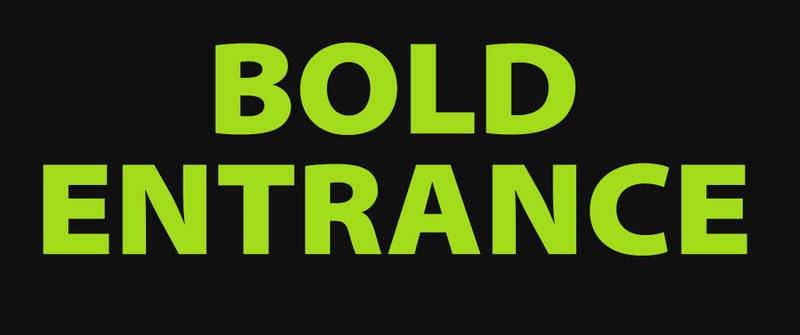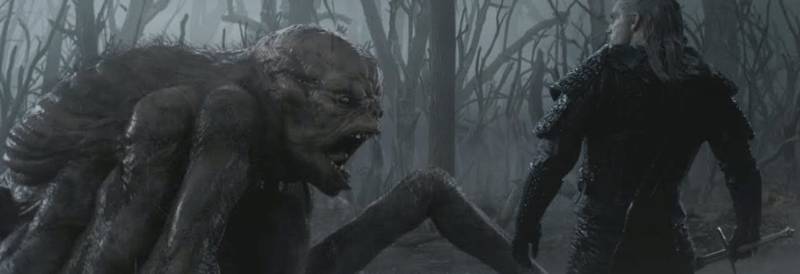The VFX Monster Mashup Of Netflix’s ‘The Witcher’
How the show’s VFX team created unique monsters for a unique fantasy series
The Witcher has filled the gap left by Game of Thrones, but it isn’t a retread of HBO’s hit series. Netflix’s dark fantasy which follows the outcast monster-hunter Geralt of Rivia (Henry Cavill) and sorceress Yennefer of Vengerberg (Anya Chalotra) is inspired by Slavic fairy tales more than the Norse history and legends which influence Game of Thrones. Hedgehog-faced courtiers, a mutant princess, and a plethora of nasty hybrid monsters and creatures help tell Geralt’s tale adapted from Polish author Andrzej Sapkowski’s eight-book series.
You might recognize the golden dragon, but you’re probably unfamiliar with monsters like the Kikimora, Striga, and Roachhound. The look of the characters and monsters already existed in CD Projekt Red’s popular video games, but The Witcher’s showrunner Lauren Schmidt Hissrich (The Umbrella Academy) wanted to follow Sapkowski’s descriptions instead. The show’s production visual effects supervisor, Julian Parry (Vikings) shared Schmidt Hissrich’s vision for the show’s creatures:
“I didn’t want to be contaminated by any outside influence, but instead decided to stay focused on how Lauren interpreted the books,” Parry told Animation Magazine. “I drew upon my rich background in dealing with creatures as well as European and Slavic folklore in which The Witcher is set.”
Parry and his team had to work within the notoriously tight schedule of episodic television to deliver a new creature or creatures for each new episode. “Part of my job is to try to make sure that we’re doing visual effects that can be managed, service the script, and are achievable within a television schedule”, added Parry.
Most of the creature designs came from Parry’s VFX department, though there were a few early concepts drawn up by the art department. Parry’s team crafted some full GC creatures and a proxy device for the actors in some scenes. But in most cases the creatures were a combination of practical and digital effects.
Credit: Netflix
Each creature had its own set of challenges
Parry outlined the unique difficulties associated with each creature. “We had many Ghouls to deal with,” he said. “They come from underground, like moles. We had to work out the animation of how the Ghouls were going to appear out of the ground, run around and move. This was in episode eight, we were running out of time so needed to be efficient in the way it was going to be shot and be post produced. We went for a halfway point between motion-capture and prosthetics. The stunt team arranged for small performers to perform the role of the Ghouls to interact with Henry [Cavill], and then we pulled the production plate apart and applied our Ghoul over the top.”
Other creatures looked good as a static design, but when it came to making it move or fight it didn’t look right and needed further adjustments to its overall design.
The giant spider-like Kikimora, the very first creature Geralt kills in the opening minutes of the first episode, exemplified this problem:
“[D]irector Alik Sakharov (Game of Thrones) wanted it to be like a fighting machine,” said Parry. “It’s tricky to keep the creature balanced [with its multiple legs] and attacking at the same time. We knew from the script what type of creature it needed to be, did some quick motion studies, and shoehorned those all into place to come up with the final animation.”
In this scene, Cavill is filmed on set. But most scenes are shot on location. Overall, the VFX Department kept greenscreen shots to a minimum, and many creatures were inserted into the footage shot in real forests, caves, and deserts.
Credit: Netflix
Creating new creatures is difficult
While there are many original creatures in The Witcher, the VFX crew still used real-world animals and insects as a reference. Just like in myths and legends, the VFX team often took two different species and combined them. The kikimora, for instance, is centaur-like. But unlike the centaur which is half-man and half-horse, the kikimora has the upper body of a man attached to something resembling the legs of a spider.
Just as the physical traits of two very different species is combined to create the kikimora, so too are the different species’ behavior. The Roachhound, which is exactly as it reads, needed to emulate the behavior of a cockroach and a dog when it pursued Yennefer and the princess through portals. Now a cockroach doesn’t typically pursue people, but a hound will track them. The VFX company One of Us managed to imbue this half cockroach and half dog with a cockroach’s movement and the nuances of a hound.
Parry’s hard work has paid off in creating some original looking creatures. “I hope that viewers like the creatures and some of the gore is unusual and unique for a TV series. The trebuchet fire is beautiful. I just want people to enjoy The Witcher the way that I’ve enjoyed making the show.”
Credit: Netflix

